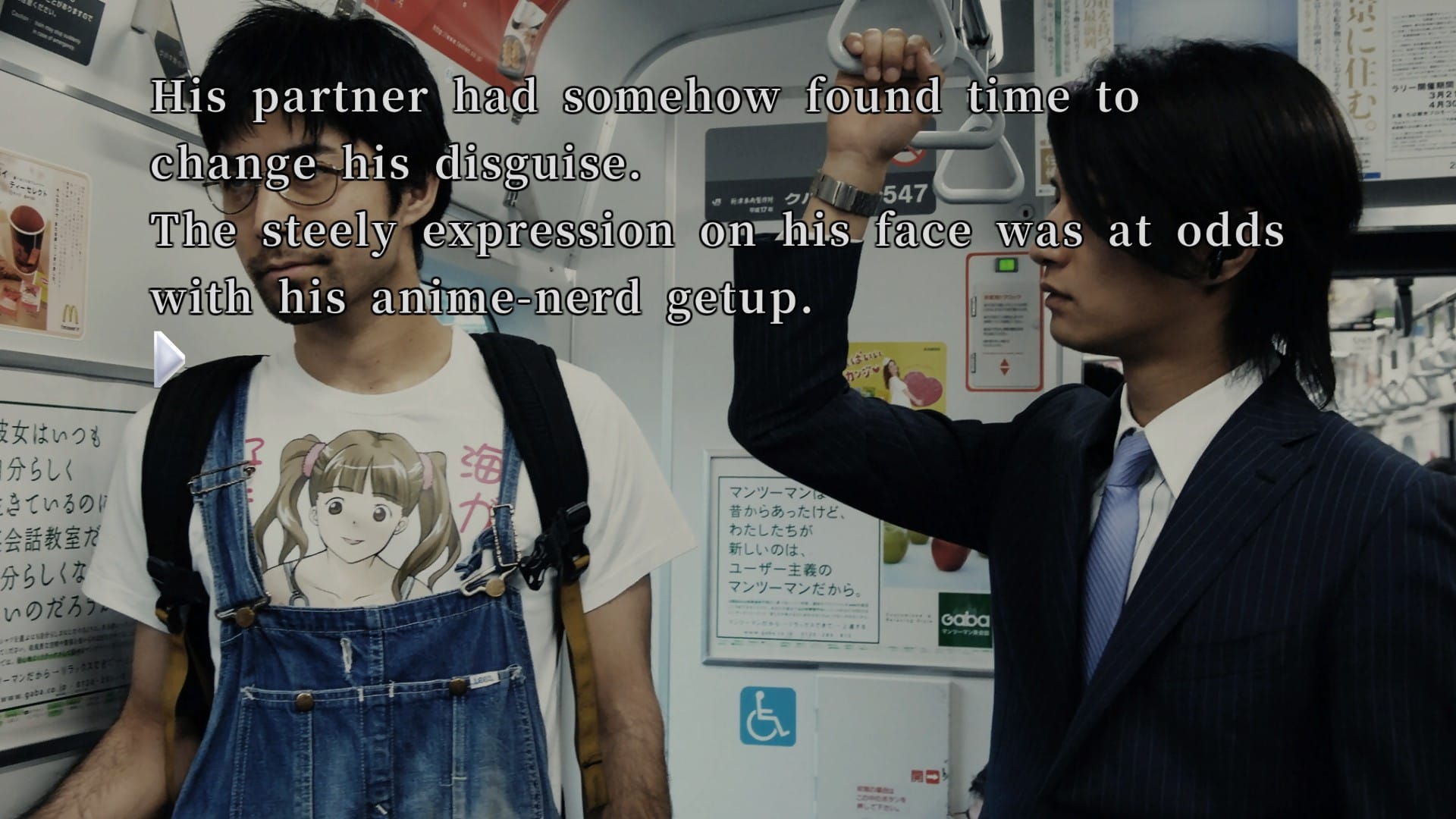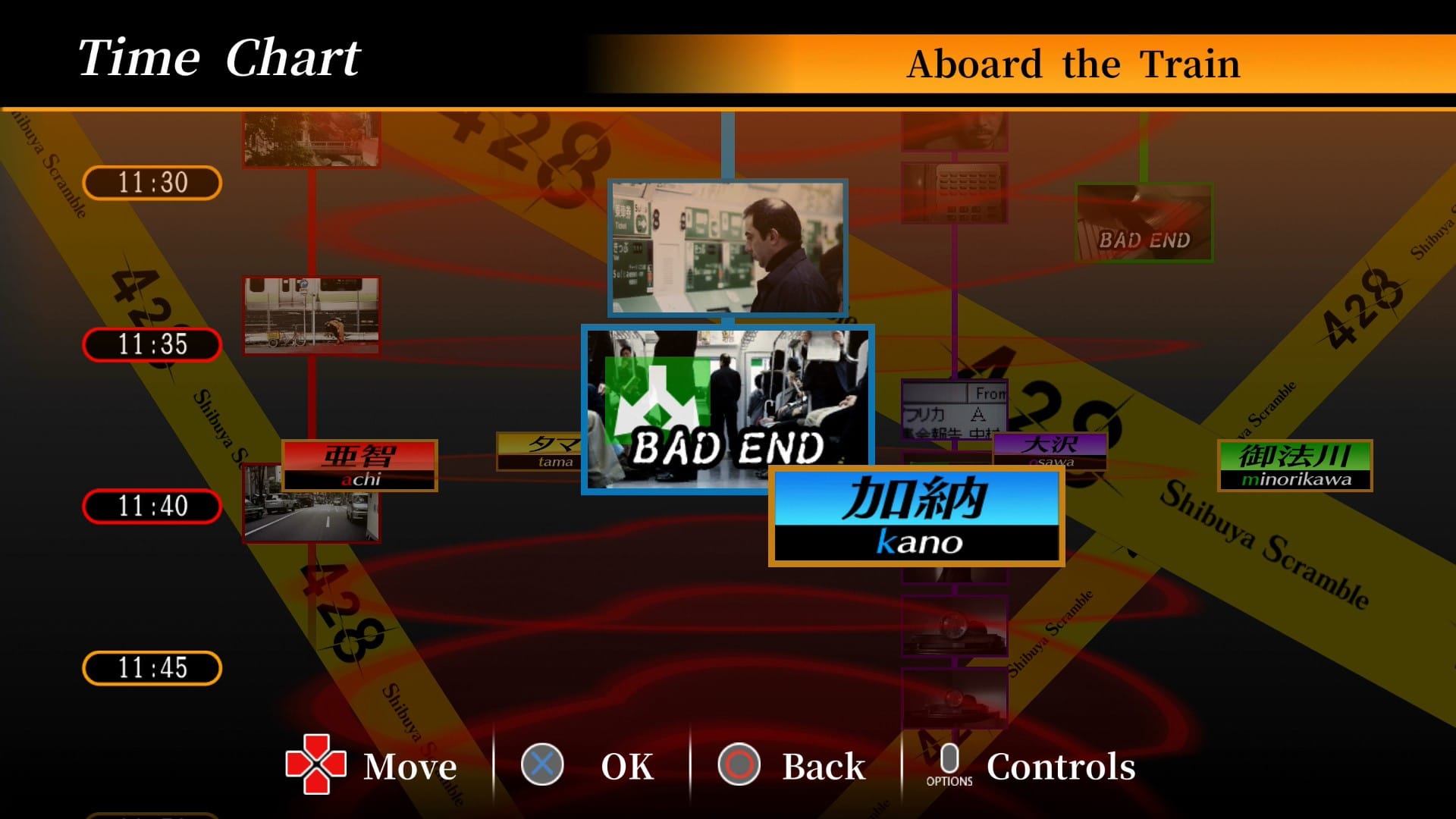Choices Have Consequences in 428: Shibuya Scramble
Branching paths take you to interesting destinations

We like to feel what we do matters. It’s also true for our actions in video game worlds. A story might give us a thousand options, but if our choices change nothing, then what’s the point? One game that respects this need is 428: Shibuya Scramble. In many respects, the way it represents the cost of our actions is still a gold standard.
A different novel
New storage technology excited game developers in the 1980s and 1990s. In this age, with the rise of laserdiscs and CDs, they could store much more information. FMV games grew out of this shift, to incorporate video recordings of real-life scenes into games.

Over in Japan, a developer took a different approach. Koichi Nakamura shaped a new genre: Sound Novels. Like FMVs, they often feature real actors or locations, but here they appear as stills. Text crawls across its interspersed images, creating an experience that is more akin to a book than a movie.
The concept might sound simplistic, but titles like Otogirisō were good sellers for Chunsoft during the 1990s. In Japan, that is. The slow pace, paired with the emphasis on text, dissuaded any official attempts to bring them to the West. That all changed in 2018.
One game visits a shore
428: Shibuya Scramble is one of the most modern relatives of the earlier Sound Novels. When it arrived on Western shelves, it was already around a decade old, though. The success of Spike Chunsoft’s visual novels had at last convinced them to bring the game to a market unfamiliar with its history.

428: Shibuya Scramble is one of the most modern relatives of the earlier Sound Novels.
It wasn’t just any game, either. As of writing, it’s one of an exclusive club of only around 30 titles that has received a perfect score from Famitsu, a Japanese gaming magazine that’s been in business since 1986. What makes this even more special is that, in the Famitsu review system, for a game to get a 40/40 total, four discerning critics need to give 10/10 scores. As we all know, it’s difficult for people to agree on anything at the best of times.
The critical acclaim piqued my interest, too. I didn’t know if I would enjoy it, because it looked quite complex, especially in terms of what I understood about its timelines and the unusual visual design. It sat in my backlog for a while. Then 2024 rolled into view.
No escape from a grasp
Over these last couple of years, I have played through all the Zero Escape and The Somnium Files games. It wet my palate for Spike Chunsoft’s unique taste of off-the-wall visual novel. So, then I rediscovered 428: Shibuya Scramble.

One facet that’s apparent straight out of the gate is Shibuya Scramble’s appearance. Real actors stand in front of real locations in Tokyo. The style grounds the tale, but it also diverges as we get to know the unique characters, each of whom has their own particular storylines that play out during one day in the city.
Shibuya Scramble’s timeline feature also helps us to switch between the characters’ point of views. This is more than just a gimmick, though. Through fresh eyes, we uncover new information and can see events from different perspectives. It’s quite an addictive mechanic. So-called bad endings are entertaining too, because you don’t feel frustrated when your choices lead you into a dead end (it also helps that “Game Over” screens give helpful hints).

As of writing, it’s one of an exclusive club of only around 30 titles that has received a perfect score from Famitsu, a Japanese gaming magazine that’s been in business since 1986.
What helps it remain fresh is that each character has a unique voice as well as outlook. The beautiful soundtrack creates distinct atmospheres in each character’s story. One’s tone is more reminiscent of a claustrophobic psychological horror, while another is a light-hearted comedy. It’s also impressive that characters aren’t static. They grow, change, and make mistakes. It’s an intimate look into the lives of several individuals; ones that will even make stone feel empathy.
Ideologies of a choice
Relationships are a pivotal part of the story. One theme that struck a chord with me is that, while there is life, it’s never too late to repair a link. Many of the characters explore that lesson, although in various ways: familial, casual, and professional relationships come under the lens.
We too often condemn people for mistakes. We often condemn ourselves, too. Redemption should be possible for people to reach the other side; to serve as an example to others that we can change over time. One day is enough to transform us into a different person, after all. Hitomi Osawa, a character in Shibuya Scramble, sums it up in one sentence:
But if you can't bring yourself to take risks, to do things, you can't meet new people and have new experiences. That's the part I always get hung up on - the risk.
While the in-game hours tick by, we can’t help but think about how we use or misuse our time. It’s our most precious commodity, but we sometimes forget that fact. We only have a limited amount available to us, like in 428: Shibuya Scramble, and what we spend it on shapes our real lives.

While the in-game hours tick by, we can’t help but think about how we use or misuse our time. It’s our most precious commodity, but we sometimes forget that fact.
This shouldn’t be a warning that strikes fear into our hearts. The clock is an invitation for us to savor each moment in a day. Our actions might just change the world. Or, at the very least, change someone’s world.
More than the sum of its parts
Shibuya Scramble’s creation was a major undertaking. The game’s development team took over a 100 000 photos during their excursions in the city. All the while, writers had to navigate massive scripts and actors had to portray characters in real-life locations. All of this effort pays off in the end.
Paper-thin margins in the video game industry also mean that we might never see its likes again. 428: Shibuya Scramble was one of the last ambitious Japanese Sound Novels that featured real-life photos. Perhaps that’s fitting because, like the genre itself, the game tells us about the transience of life, to make a choice while we still have the option. The sands of time fall through a hourglass, and the world changes, but we can shape our final footprint.